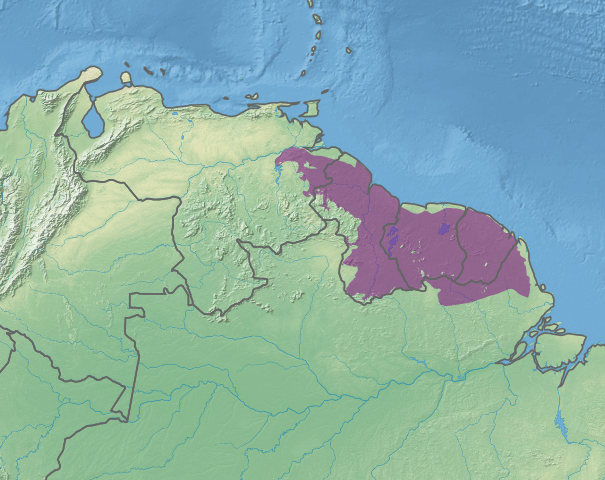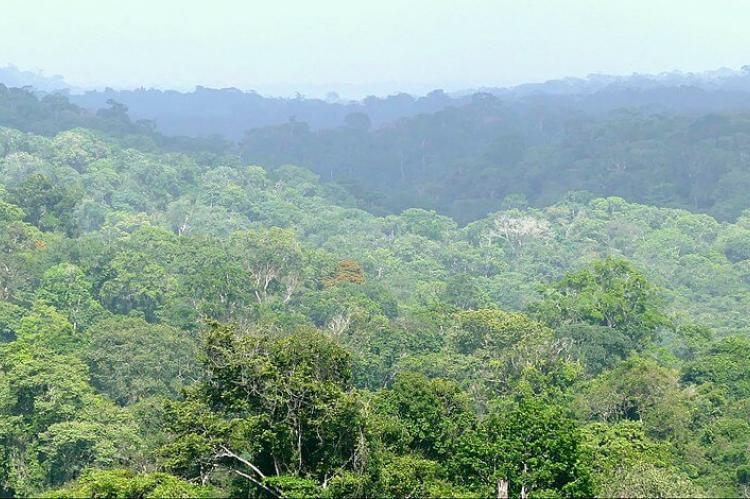The Guianan Moist Forests: A Vast and Pristine Rainforest Expanse in Northeastern South America
Stretching across the northeastern coast of South America, the Guianan moist forests ecoregion is one of the world's most extensive tracts of relatively pristine lowland tropical rainforests. It is a biodiversity hotspot, harboring a wide variety of flora and fauna, many of which are endemic to this ecoregion.
The Guianan Moist Forests: A Vast and Pristine Rainforest Expanse in Northeastern South America
Stretching across the northeastern coast of South America, the Guianan moist forests ecoregion stands as one of the world's most extensive tracts of relatively pristine lowland tropical rainforests. This vast expanse of verdant wilderness spans across the Guianas – Guyana, Suriname, and French Guiana – as well as parts of eastern Venezuela and the northern regions of the Brazilian states of Pará and Amapá. Encompassing a total area of over 51 million hectares, the Guianan moist forests are a biodiversity hotspot, harboring a wide variety of regional and local flora and fauna, many of which are endemic to this remarkable ecoregion.
Geographic Extent and Climate
The Guianan moist forests ecoregion covers a significant portion of the Guiana Shield, a vast and ancient geological formation underlies much of northeastern South America. This ecoregion is bordered by the Amazon Basin to the south and the Orinoco River Basin to the west, creating a unique biogeographic setting.
The local and regional climate of the Guianan moist forests is generally hot and wet, strongly influenced by the northeastern trade winds and the Intertropical Convergence Zone (ITCZ). These atmospheric systems constantly blow moisture-rich air inland from the Atlantic Ocean, with annual oscillations of the ITCZ regulating precipitation patterns.
Annual rainfall within the ecoregion ranges between 2,000 and 4,000 millimeters (79 to 157 inches). Yearly average temperatures vary from a minimum of 21.5°C (70.7°F) to a maximum of 30.5°C (86.9°F), with a mean of 26°C (79°F).
Biodiversity and Endemic Species
The Guianan moist forests are renowned for their exceptional biodiversity. There are an estimated 8,000 vascular plant species, of which nearly half are believed to be endemic to the region. Forest plant species composition varies from east to west, with species dominant in one area and completely absent in another. Additionally, the ecoregion is home to patches of savanna and herbaceous swamps along the coastal lowlands.
The flora of the Guianan moist forests is diverse, with the upper tiers reaching heights of up to 40 meters (130 feet). The trees are mainly evergreen but may shed leaves during the dry season. They support a rich community of epiphytes, parasites, shrubs, and herbaceous plants that cover the forest floor.
The faunal diversity is equally impressive, with over 220 species of mammals identified in Guyana alone, including over 100 species of bats. Notable endemic mammal species include the rufous mouse opossum (Marmosa lepida), six-banded armadillo (Euphractus sexcinctus), red-handed tamarin (Saguinus midas), white-faced saki (Pithecia pithecia), red-faced spider monkey (Ateles paniscus), Neotropical pygmy squirrel (Sciurillus pusillus), delicate pygmy rice rat (Oligoryzomys delicatus), Guiana bristly mouse (Neacomys guianae), Bahia porcupine (Coendou insidiosus), white-faced spiny tree-rat (Echimys chrysurus), Schultz's round-eared bat (Lophostoma schulzi), and rufous dog-faced bat (Molossops neglectus).
The avian diversity is equally remarkable, with over 668 species recorded in Suriname and 786 in Guyana, including iconic species such as the Guianan cock-of-the-rock (Rupicola rupicola), hoatzin (Opisthocomus hoazin), harpy eagle (Harpia harpyja), and crested eagle (Morphnus guianensis).
The herpetofauna of the Guianan moist forests is diverse, with three caiman species, four amphibians, 43 lizards, 88 snakes, and ten non-marine turtles, including threatened species like the black caiman (Melanosuchus niger) and yellow-spotted river turtle (Podocnemis unifilis). Additionally, the region is home to diverse amphibian families, including the Hylidae, Poison dart frogs (Dendrobatidae), and Leptodactylidae.
Conservation Efforts and Challenges
Despite the Guianan moist forests' vast expanse and relatively pristine state, conservation efforts in the ecoregion face unique challenges. One obstacle is that this ecoregion encompasses five different countries – Guyana, Suriname, French Guiana, Venezuela, and Brazil – each with its own culture, language, and government agenda, making coordinated conservation initiatives more complex.
However, national efforts are underway to protect and manage the natural habitats within this ecoregion. Approximately 80% of the natural habitats in French Guiana, Guyana, and Suriname are estimated to remain intact. The Central Suriname Nature Reserve, a UNESCO World Heritage Natural Site, is the largest protected area in the Guiana Shield, accounting for almost 10% of Suriname's total area.
As human colonization and development continue to infringe upon the interior regions of the Guianan moist forests, concerted and collaborative conservation efforts will be crucial to safeguarding the long-term ecological integrity of this remarkable and biodiverse ecoregion.

Map depicting the location of the Guianan moist forests ecoregion (in purple).
